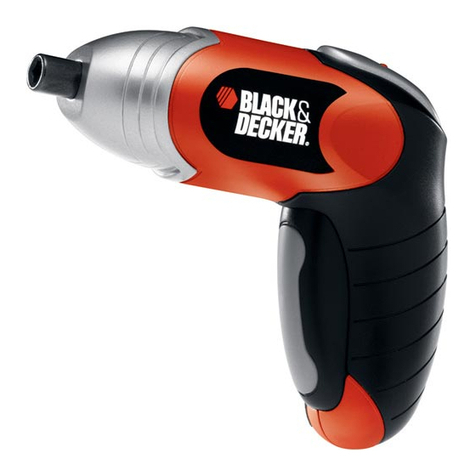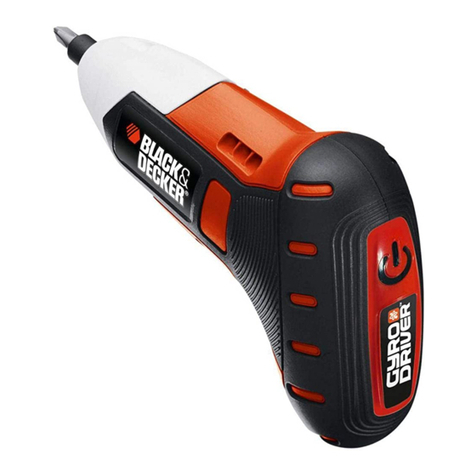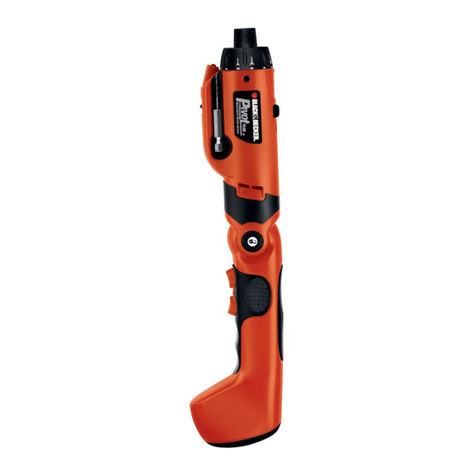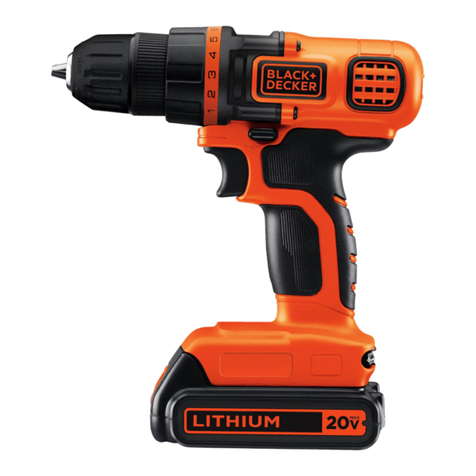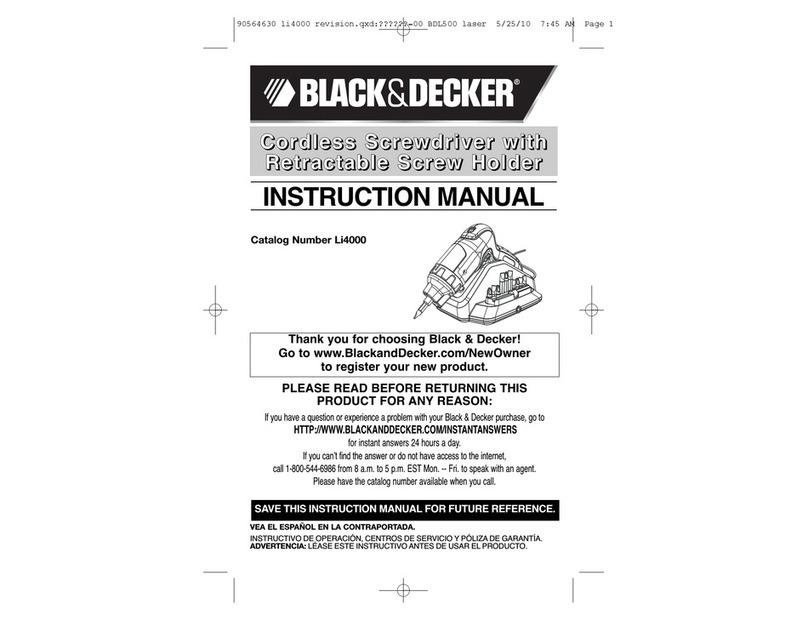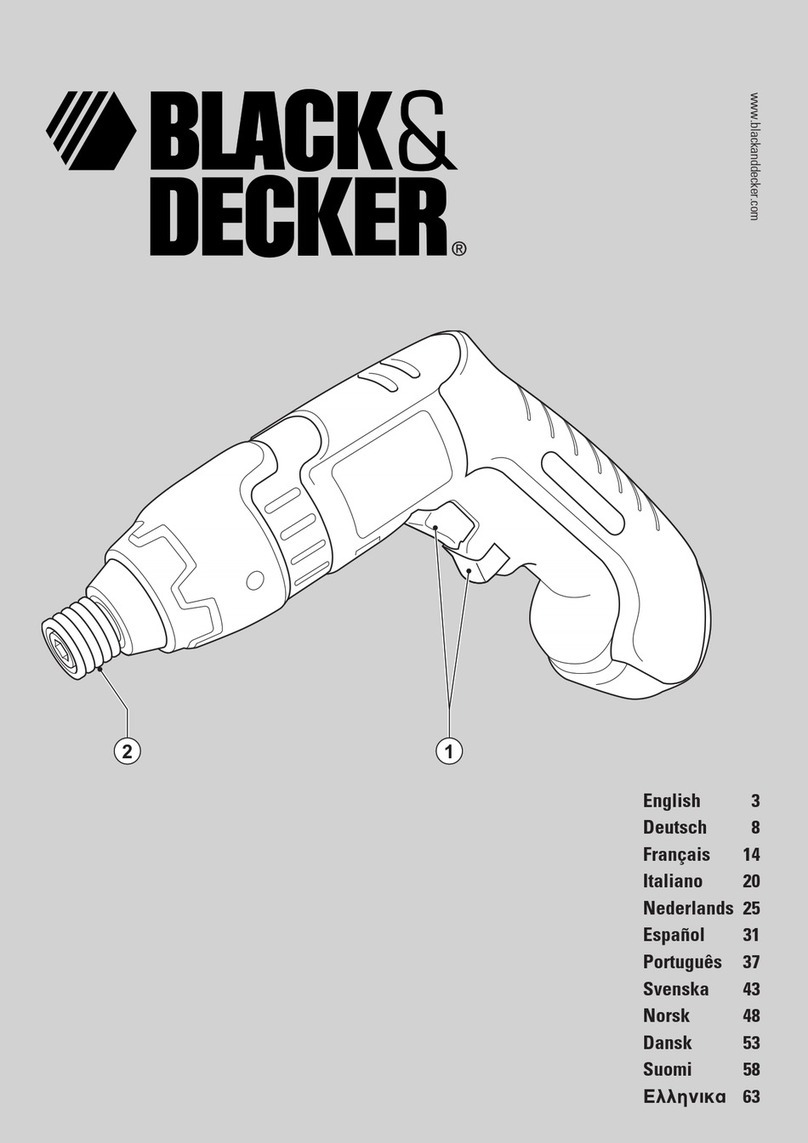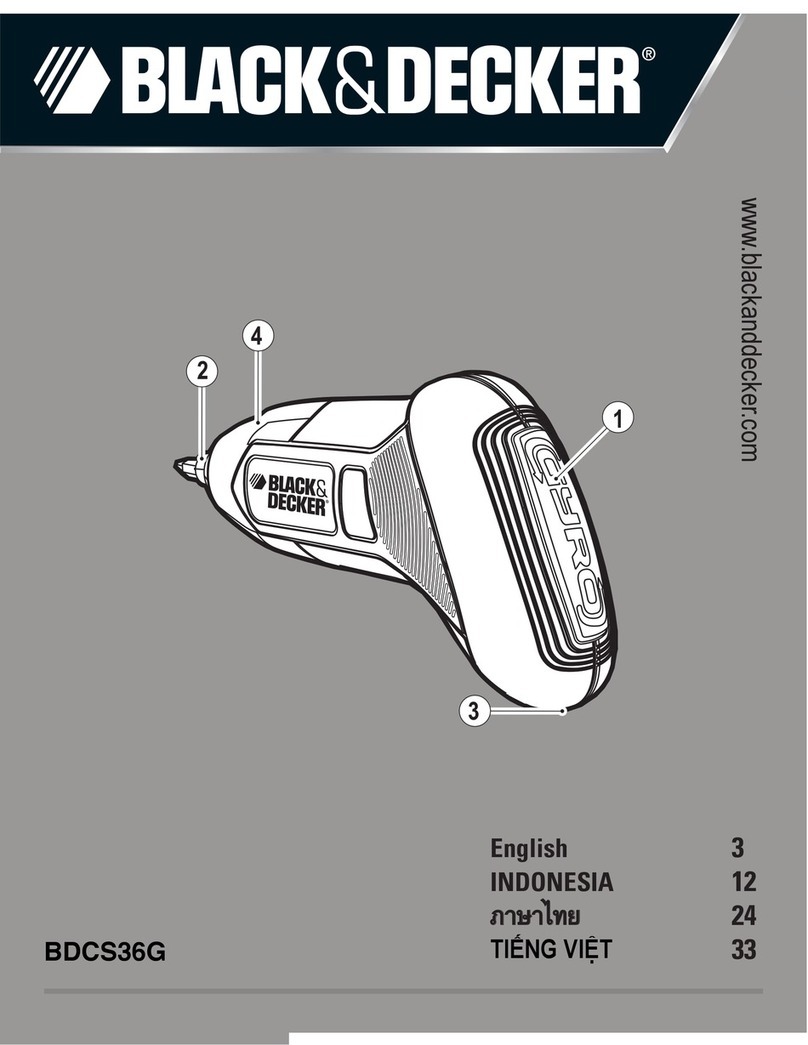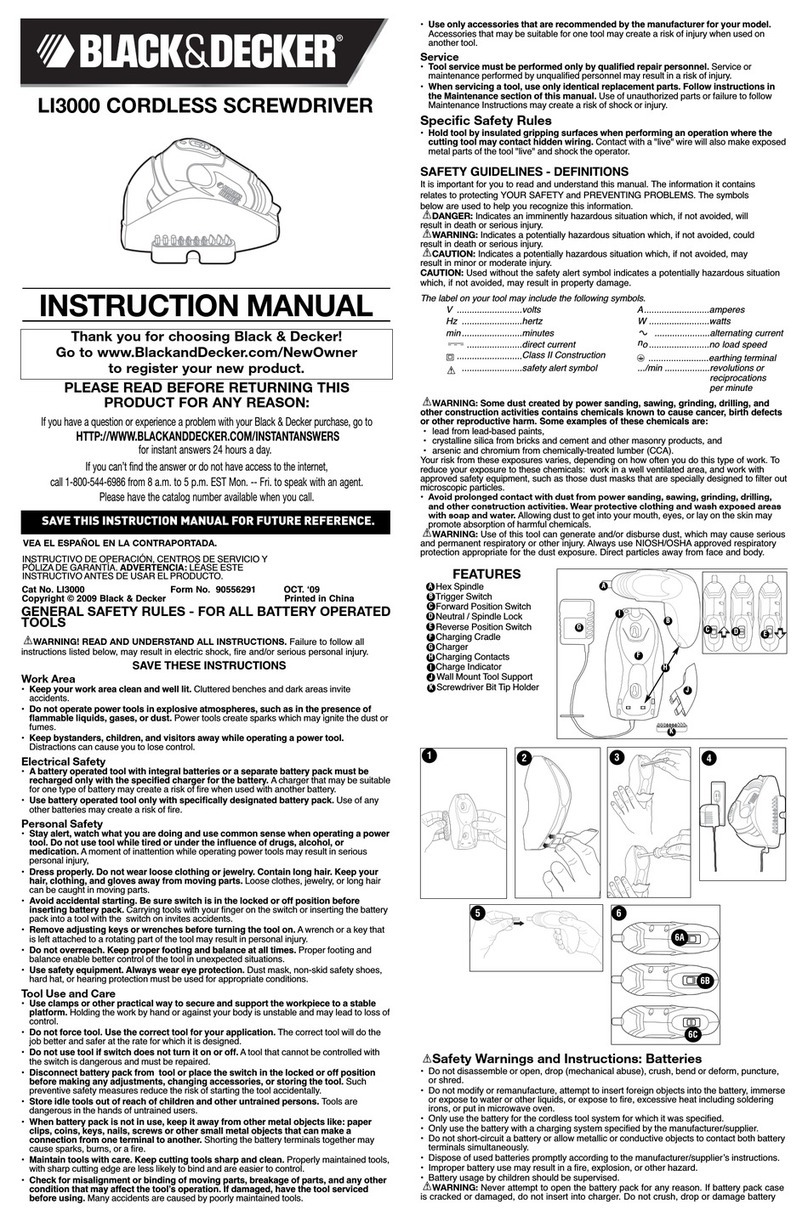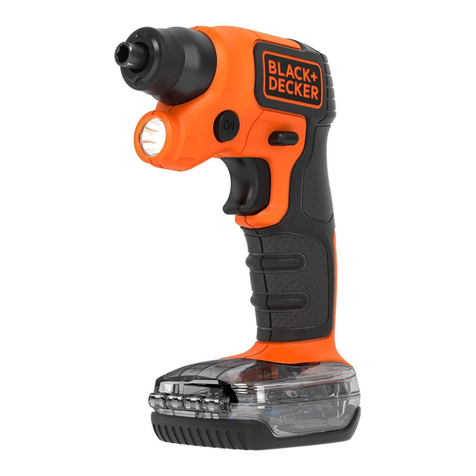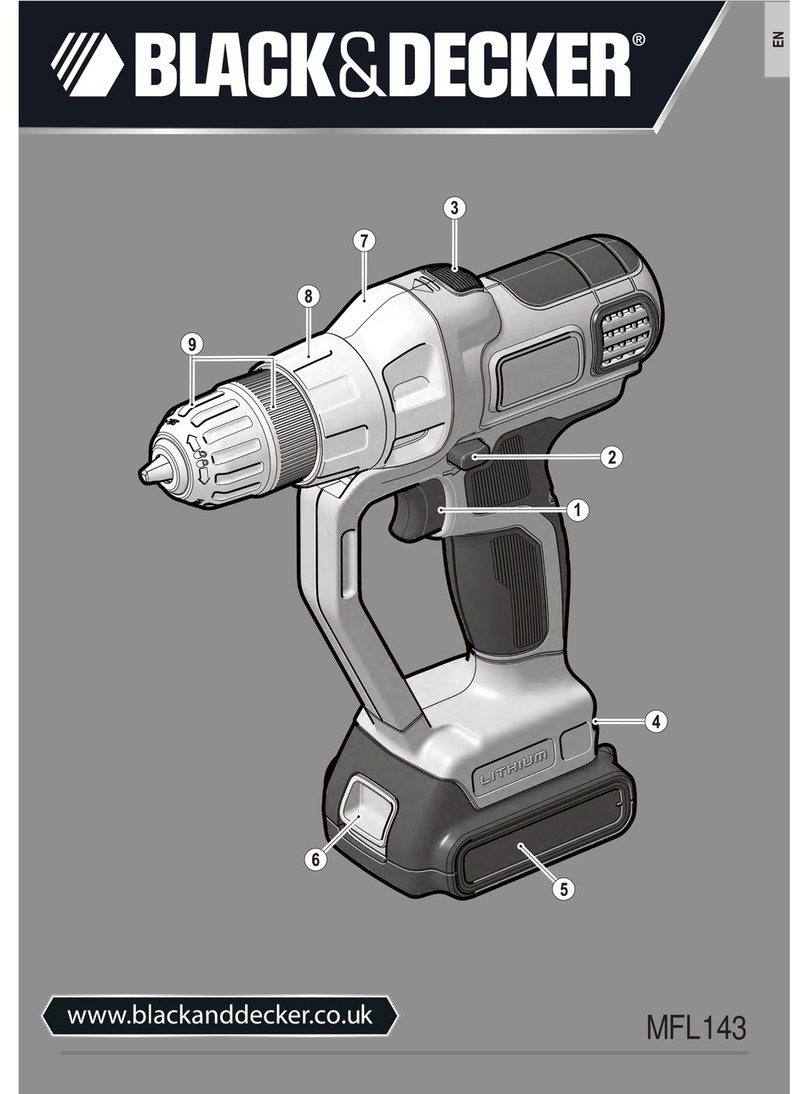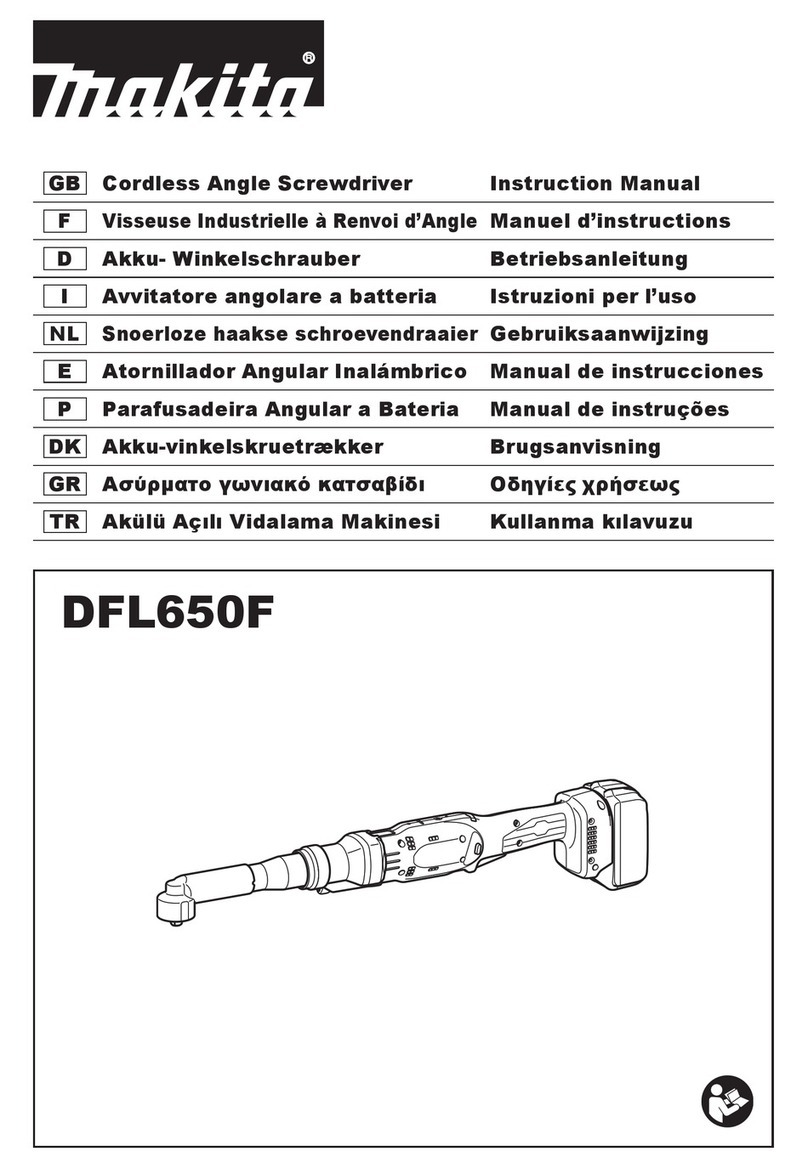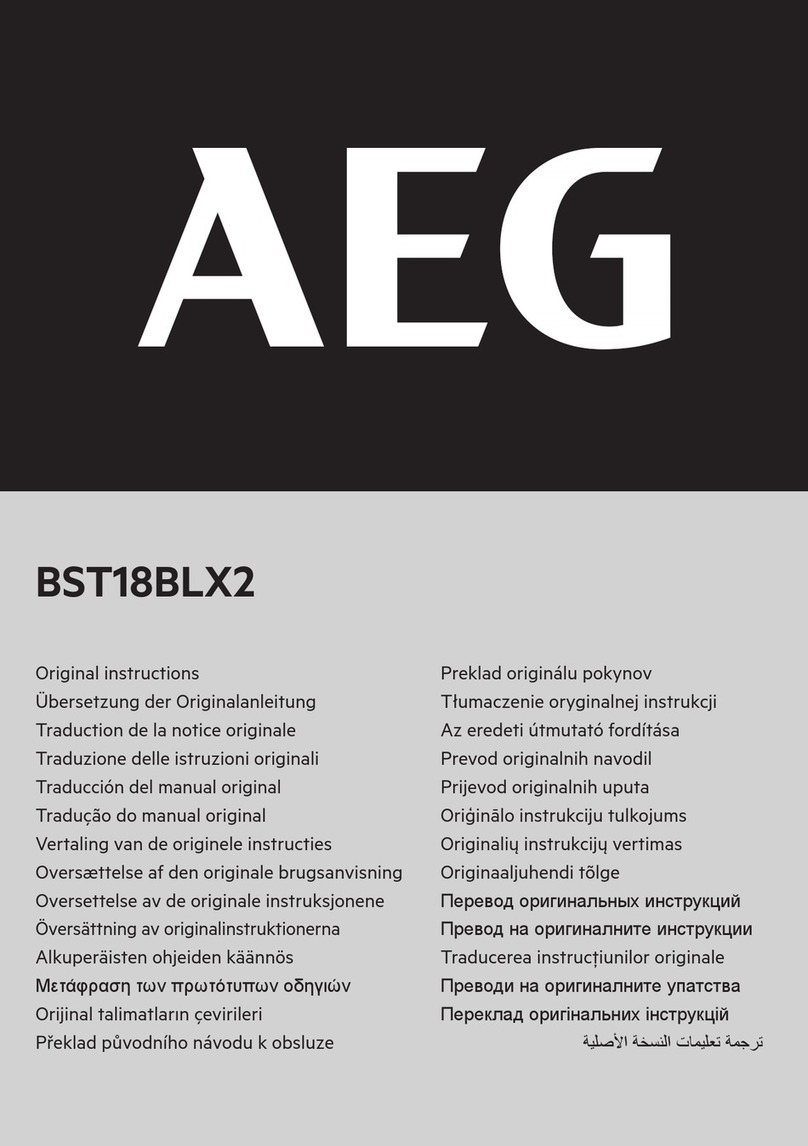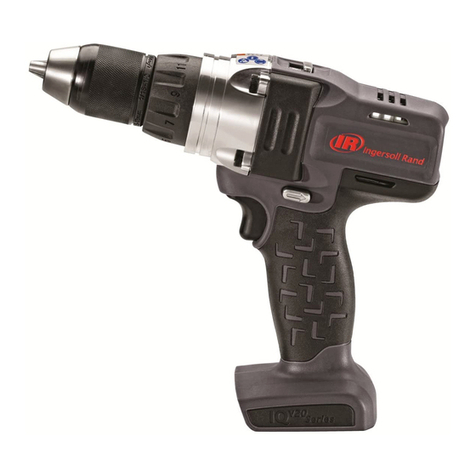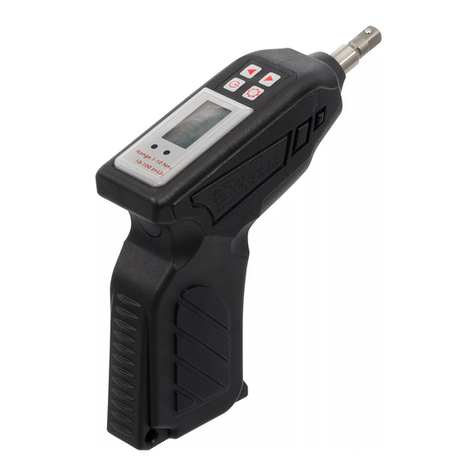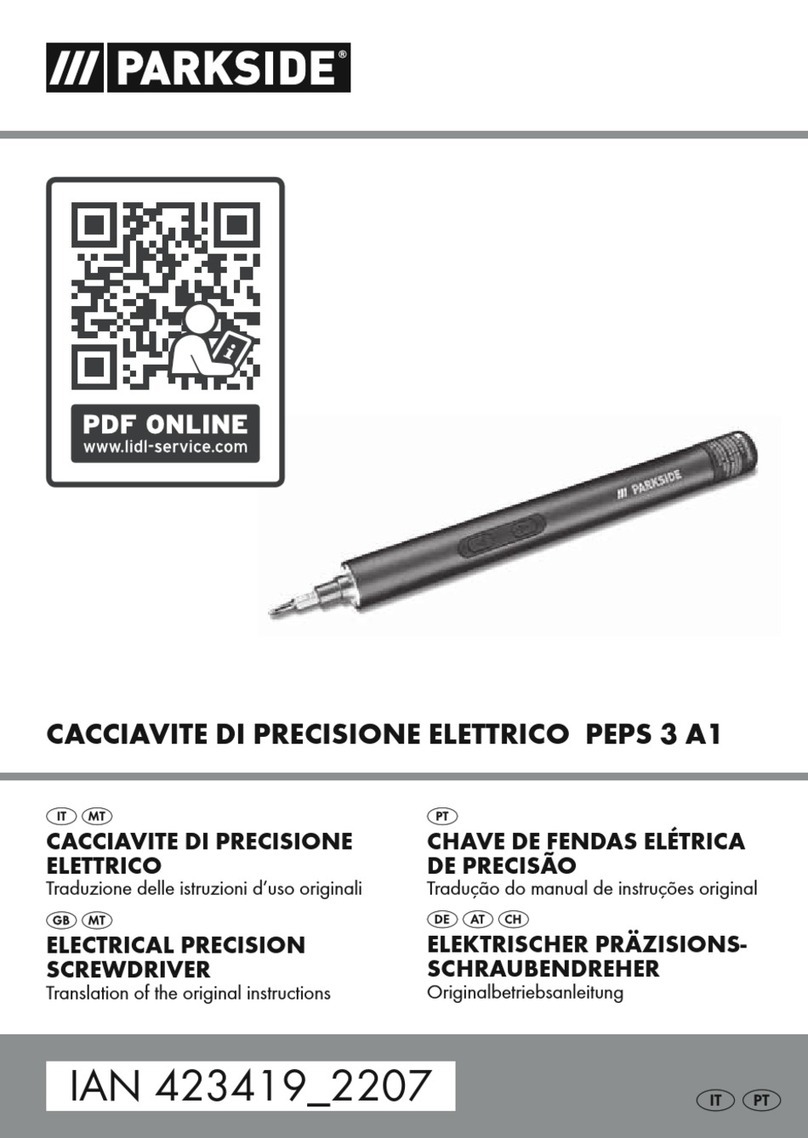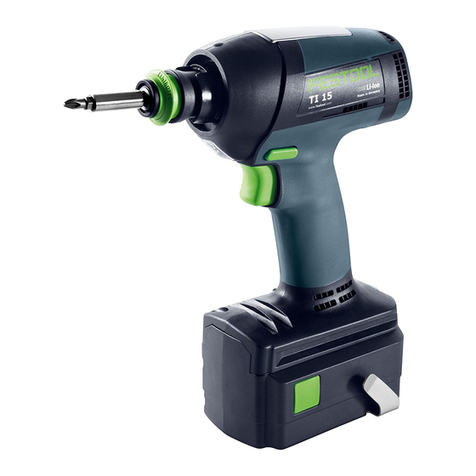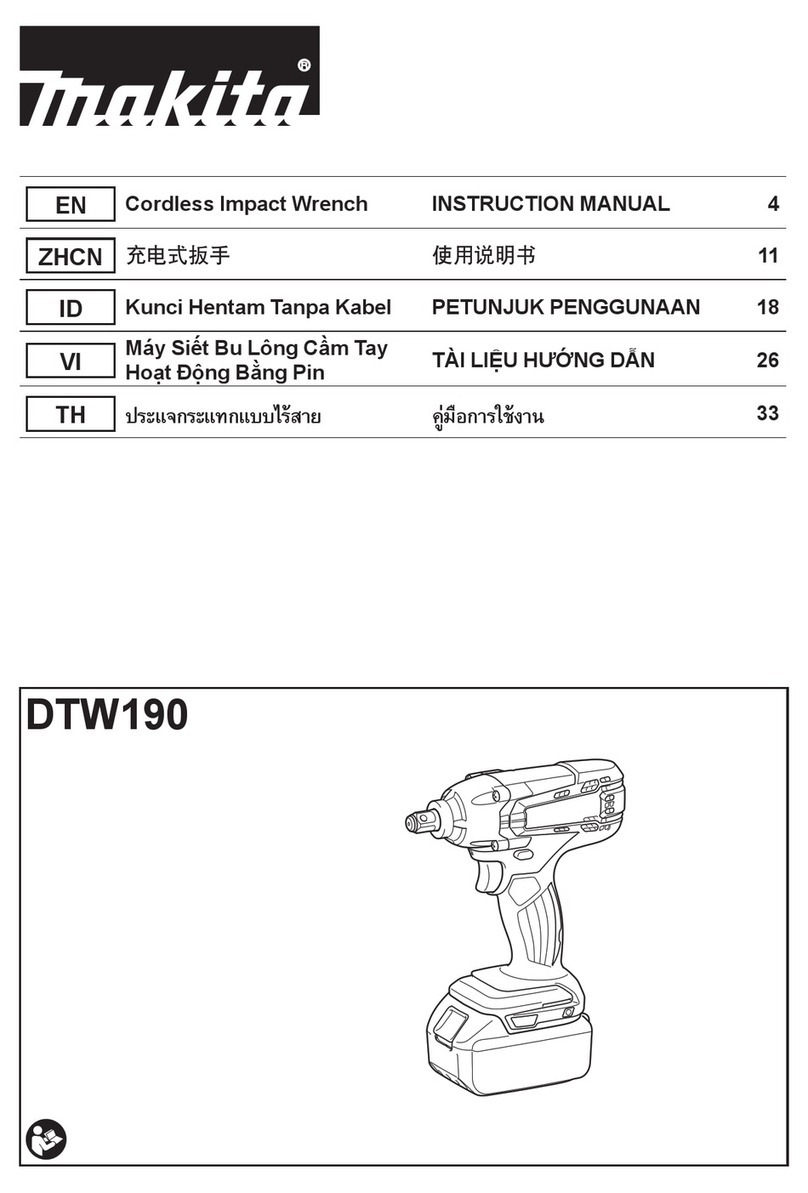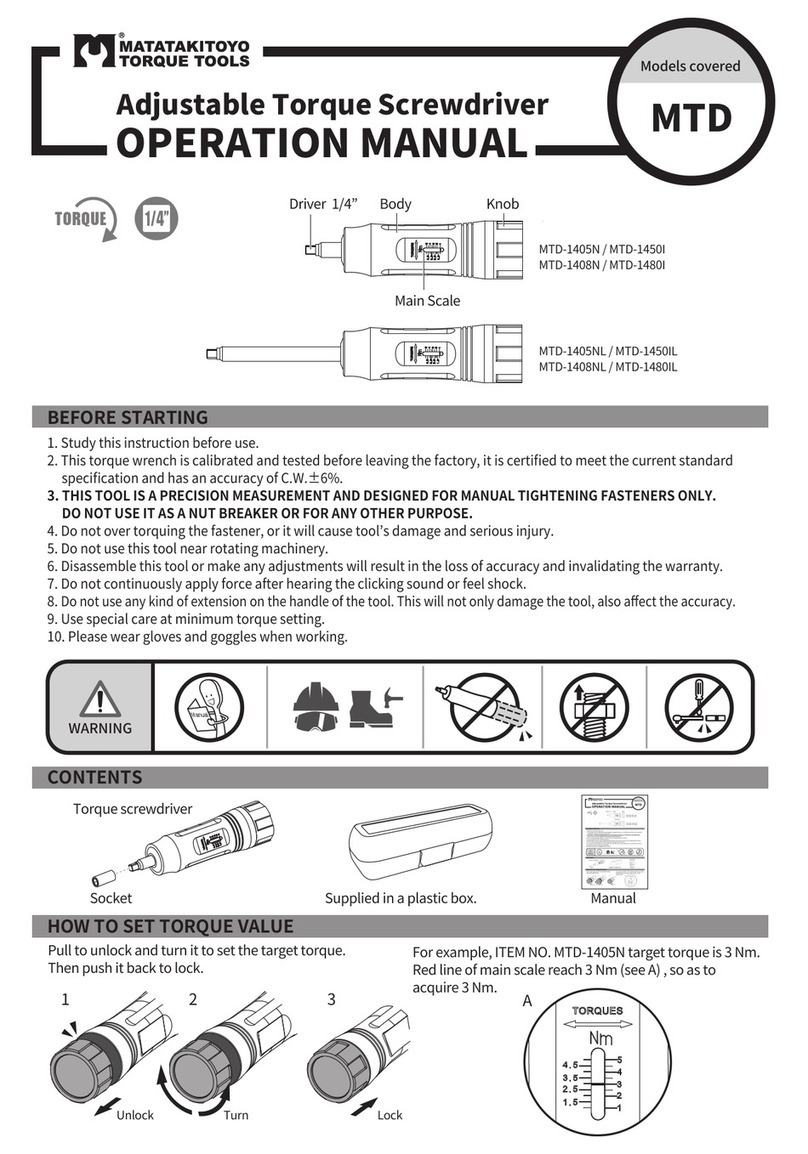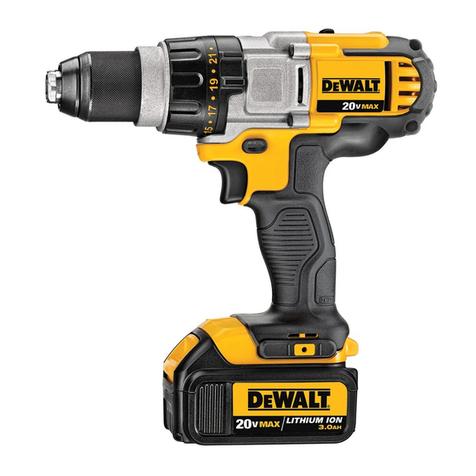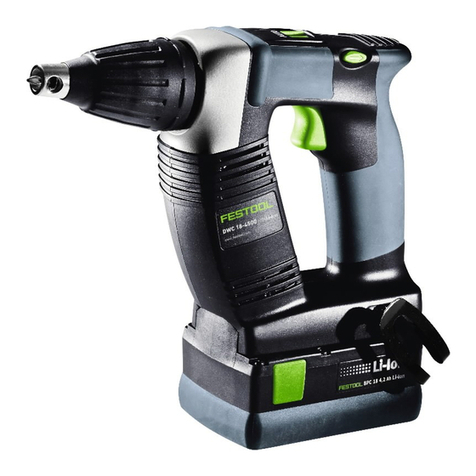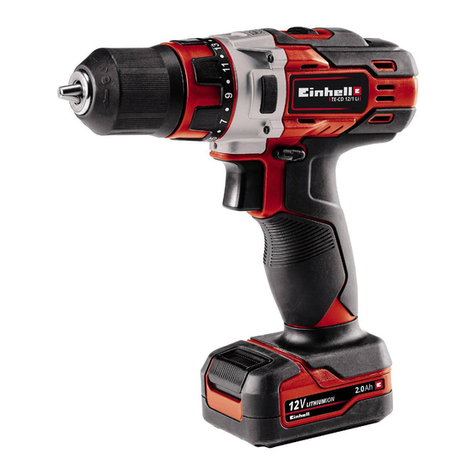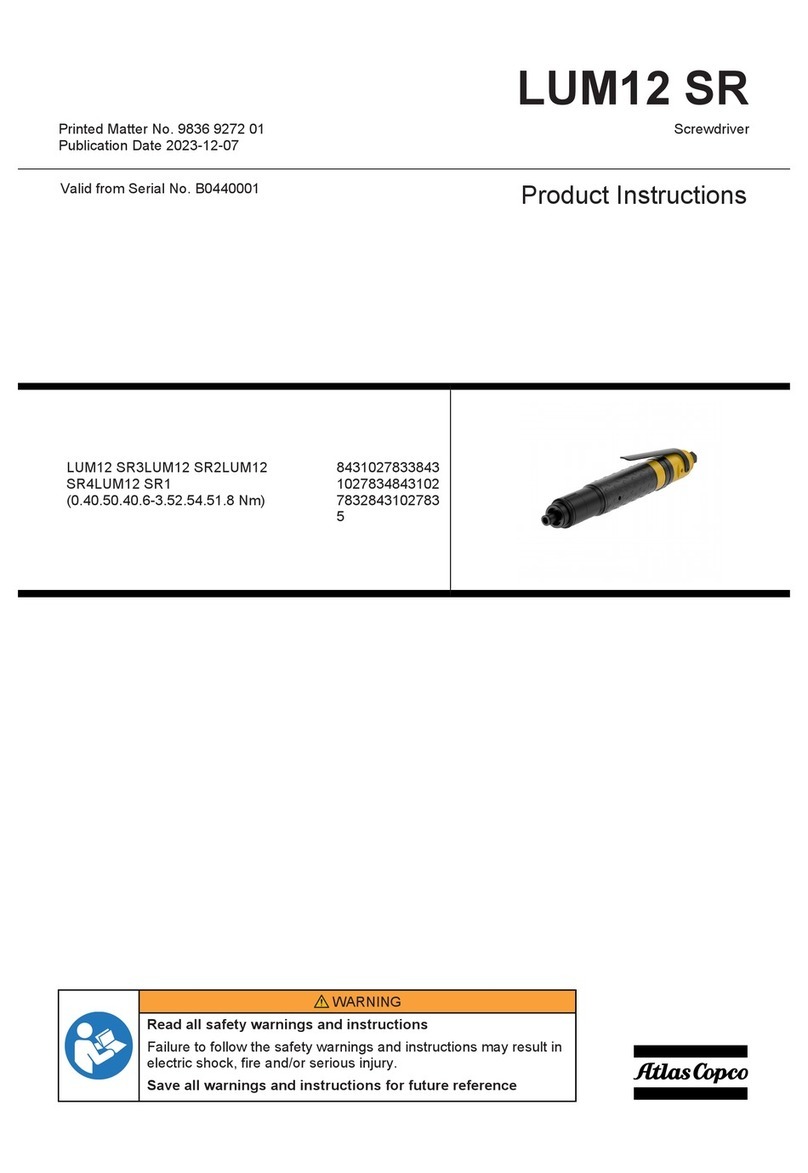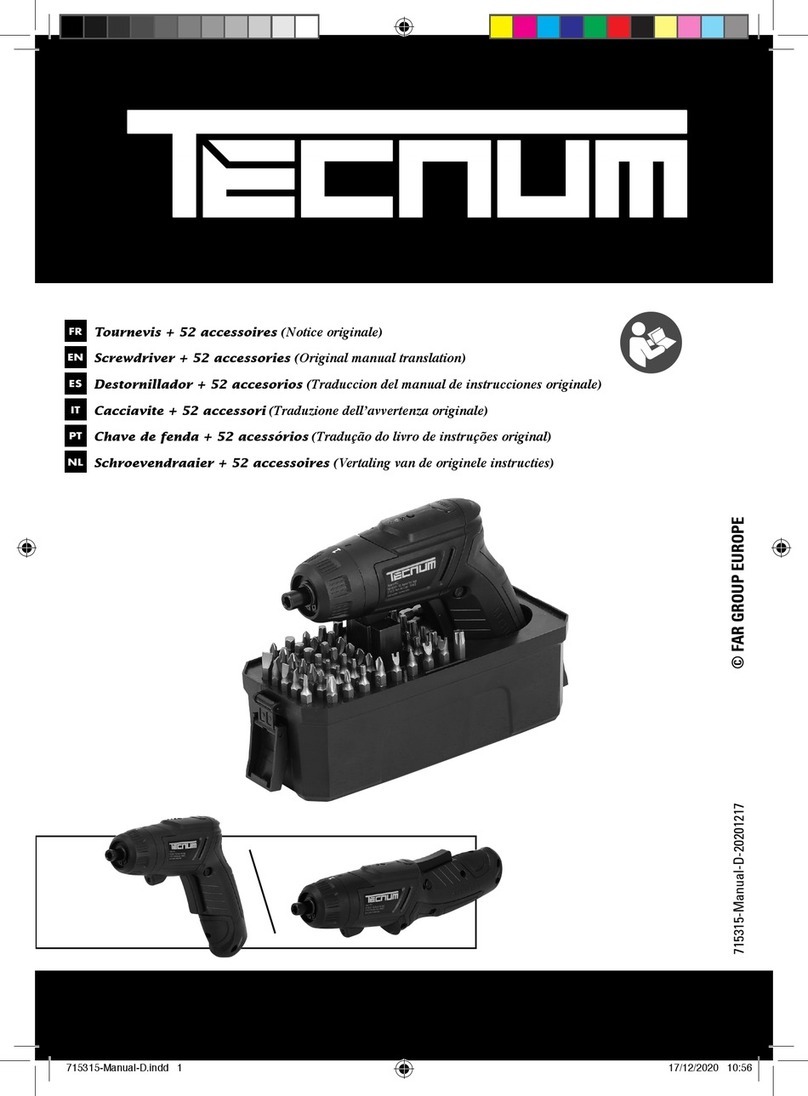
6
ESPAÑOL
c ) Evite el arranque no intencional. Asegúrese que el
interruptor esté en la posición de apagado antes
de conectarlo ala fuente de alimentación y/oal
paquete de batería, al levantar otransportar la
herramienta. Llevar herramientas eléctricas con el dedo
en el interruptor oactivar las herramientas eléctricas que
tienen el interruptor encendido invita alos accidentes.
d ) Retire cualquier llave de ajuste ollave de tuercas antes
de encender la herramienta eléctrica. Una llave de
tuercas ollave que se deje conectada auna parte giratoria
de la herramienta eléctrica puede ocasionar lesiones
personales.
e ) No se estire. Mantenga una base de apoyo yequilibrio
adecuados en todo momento. Esto permite un
mejor control de la herramienta eléctrica en situaciones
inesperadas.
f ) Vístase apropiadamente. No use ropa holgada
ojoyería. Mantenga su cabello, ropa, yguantes alejados
de las partes móviles. La ropa suelta, joyería, ocabello
largo podrían quedar atrapados en las partes móviles.
g ) Si se proporcionan dispositivos para la conexión
de instalaciones de extracción yrecolección de
polvo, asegúrese que estén conectados yse utilicen
adecuadamente. El uso de estos dispositivos puede
reducir los riesgos relacionados con el polvo.
h ) No permita que la familiaridad obtenida apartir del
uso frecuente de herramientas le permitan volverse
descuidado eignorar los principios de seguridad de
la herramienta. Una acción descuidada puede causar
lesiones severas en una fracción de segundo.
4) Uso y Cuidado De herramienta Eléctrica
a ) No fuerce la herramienta eléctrica. Use la
herramienta eléctrica correcta para su aplicación.
La herramienta eléctrica hará el trabajo mejor ycon más
seguridad en la velocidad para la que está diseñada.
b ) No use la herramienta eléctrica si el interruptor no la
enciende yapaga. Cualquier herramienta eléctrica que no
pueda ser controlada con el interruptor es peligrosa ydebe
ser reparada.
c ) Desconecte el enchufe de la fuente de alimentación
y/oel paquete de batería de la herramienta eléctrica
antes de realizar cualquier ajuste, cambiar accesorios
oalmacenar herramientas eléctricas. Dichas medidas
preventivas de seguridad reducen el riesgo de arrancar la
herramienta eléctrica accidentalmente.
d ) Guarde las herramientas eléctricas inactivas fuera del
alcance de los niños yno permita que personas que no
estén familiarizadas con la herramienta eléctrica oestas
instrucciones operen la herramienta eléctrica. Las
herramientas eléctricas son peligrosas en manos de
usuarios no capacitados.
e ) Dé mantenimiento alas herramientas eléctricas.
Compruebe si hay desalineación oatascamiento de
las piezas móviles, ruptura de partes ycualquier otra
condición que pueda afectar la operación de las
herramientas eléctricas. Si está dañada, haga
reparar la herramienta eléctrica antes de usarla.
Muchos accidentes son causados por herramientas
eléctricas con mantenimiento deficiente.
f ) Mantenga las herramientas de corte afiladas ylimpias.
Las herramientas de corte que se mantienen con bordes de
corte correctamente afilados tienen menos probabilidades
de adherirse yson más fáciles de controlar.
g ) Utilice la herramienta eléctrica, los accesorios ylas
brocas, etc., de acuerdo con estas instrucciones, teniendo
en cuenta las condiciones de trabajo yel trabajo que
se realizará. El uso de la herramienta eléctrica para
operaciones diferentes alas previstas podría ocasionar una
situación peligrosa.
h ) Mantenga las manijas ysuperficies de sujeción secas,
limpias ylibres de aceite ygrasa. Las manijas ysuperficies
de sujeción resbalosas no permiten el manejo ycontrol
seguros de la herramienta en situaciones inesperadas.
5) Uso y Cuidado de Herramienta de
Batería
a ) Sólo recargue con el cargador especificado por el
fabricante. Un cargador que es adecuado para un tipo
de paquete de batería puede crear un riesgo de incendio
cuando se use con otro tipo de batería.
b ) Use herramientas eléctricas únicamente con los
paquetes de batería designados específicamente. El
uso de cualquier otro paquete de batería puede crear un
riesgo de lesiones eincendio.
c ) Cuando el paquete de batería no esté en uso, manténgalo
alejado de otros objetos metálicos, como sujetadores de
papel, monedas, llaves, clavos, tornillos uotros objetos
metálicos pequeños, que puedan hacer una conexión de
una terminal ala otra. Poner en corto las terminales de la
batería puede causar quemaduras oun incendio.
d ) Bajo condiciones abusivas, el líquido puede ser
expulsado de la batería; evite el contacto. Si ocurre
contacto accidentalmente, lave con agua. Si el
líquido hace contacto con los ojos, busque ayuda
médica adicional. El líquido expulsado de la batería
puede causar irritación oquemaduras.
e ) No use un paquete de batería oherramienta que
estén dañados omodificados. Las baterías dañadas
omodificadas pueden presentar comportamiento
imprevisto que resulte en incendio, explosión oriesgo de
lesiones.
f ) No exponga un paquete de batería oherramienta
afuego otemperatura excesiva. La exposición al fuego
otemperatura mayor a265°F (130°C) puede causar una
explosión.
g ) Siga todas las instrucciones de carga yno cargue el
paquete de batería ola herramienta fuera del rango de
temperatura especificado en las instrucciones. Cargar
inadecuadamente oen una temperatura fuera del rango
especificado puede dañar la batería eincrementar el riesgo
de incendio.
